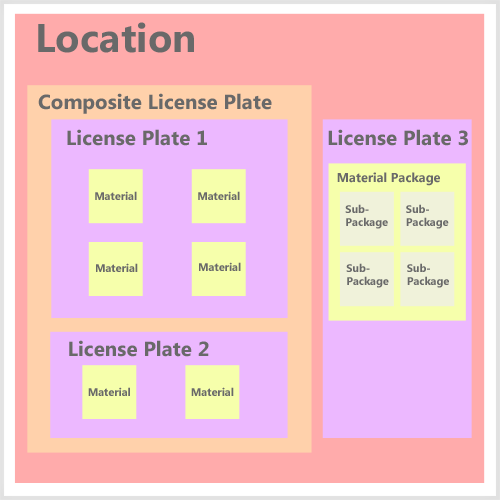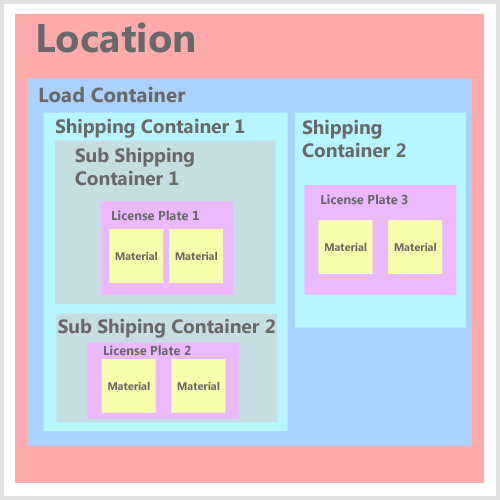Physical Hierarchy
Sections
Related Tutorials
- Setting Up Warehouses
Overview
The relationships between physical parts of your Warehouse follow a logical hierarchy in FootPrint, consisting of inventory (Materials) assigned to License Plates, those License Plates within Locations, Locations inside of Areas and Zones, and those Areas and Zones underneath the Warehouse itself. Your Warehouse in FootPrint can be set up in any fashion you'd like, but ideally this layout will mirror the physical reality of your Warehouse.
Warehouses
Below, you can see an example of how a Warehouse might be set up in FootPrint. To the left is the Warehouse Explorer, and on its right is a visual layout of the relationships of each part of the Warehouse. By placing your mouse over the different parts of the Warehouse in the Explorer, the associated section will be highlighted in the diagram.

As you can see in Area 2 above, Zones and Areas can be created underneath other Areas or Zones, allowing a great deal of customizability and organization to your Warehouse.
Equipment Locations hold License Plates with Materials the same as any other type of Location, but are tied to Mobile Devices in the system.
Dock Doors behave similarly to Zones or Areas, and must contain Locations to be able to store Materials within them.
Yard Locations are still categorized as being inside of your Warehouse. They can be placed inside an Area or Zone (as above) for further organization.
Locations and Materials
Within each type of Location (Inventory, Equipment, or Yard), you can store License Plates. Within those License Plates will be kept each unit of Material you have in your Warehouse.
Composite License Plates
License Plates can be grouped together by Composite License Plates. Composite License Plates can only occupy one Location, so when one of its associated License Plates is moved from the Location, it will be disassociated with the Composite License Plate.
Material Packaging
Materials themselves can be held within Packaging Types with Sub-Packaging levels, so that one Package may contain several smaller Packages of the Material inside.

Load and Shipping Containers
Load Containers
Load Containers have assigned Shipments to them, and each Material, License Plate, and Shipping Container within a Shipment will be associated with that Load Container.
Shipping Containers
Shipping Containers are automatically created for Shipping License Plates when Picking. A Shipping Container can either hold one License Plate, or any number of Shipping Containers within itself.

Tip
Load Containers are not required for Shipment.
| Last Updated: |
| 06/06/2025 |

